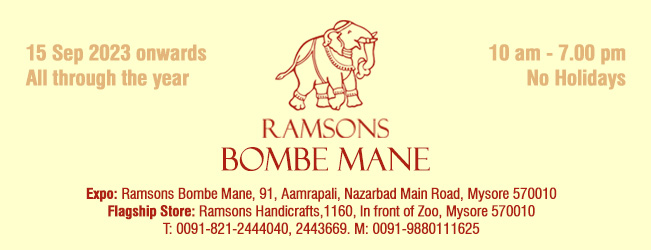 |
| Daivasthana created at Bombe Mane to house Navadurga |
This idea of worshipping divinity as feminine has been well documented in Vedas and over centuries has spread far and wide in the sub-continent. According to Devi Mahatmya, nine manifestations of devi Durga are known as Shailaputri, Brahmacharini, Chandra Ghanta (Chanda Khanda), Kushmanda, Skandamata, Katyayini, Kalaratri, Maha Gauri and Siddhidatri (Siddhidayini) and are collectively called Navadurga. Each of them is worshipped on different nights of Navaratri.
 |
| Shailaputri Brahmacharini Chandakhanda |
 |
| Kushmanda Skandamata Katyayini |
 |
| Kalaratri Mahagauri Siddhidayini |
Based on the iconography as suggested in the encyclopedic Sritattvanidhi, Navadurga figures have been created in jackfruit wood by Pradeep Gudigar of Kundapura. Rajesh Acharya of Udupi has casted bronze masks in traditional lost wax process. Udupi artist Purushotham Adve's acrylic on canvas depict masks and other aspects of bhutaradhane. Palimar's Venkataramana Kamath has crafted masks, scimitars and daiva figures in clay. A beautiful pillared sanctum has been created by Srikanth Sharma of Srirangapatna to house these Navadurgas. Padmanabha Pambada and his assistants have come all the way from Palimar to decorate the diorama with traditional ani ornamentation using parts of the sacred coconut and areca trees and embellishing them with floral patterns and mango leaf festoons.
This tradition of veneration is unique to the coastal strip of our state. Hundreds of garadis and daivasthanas are spread across the areas populated by Tuluvas from Sullia to Baindur.
This is an endeavour of Bombe Mane to showcase little known traditions associated with the all important devi worship. This year's Navadurga worship has been presented in traditional Tulu folk idiom.This unique flavour of Tuluva land is sure a feast for senses.




1 comment:
very nice information about mysore. great article. great work... keep on doing...
Resorts in Mysore
Post a Comment